|
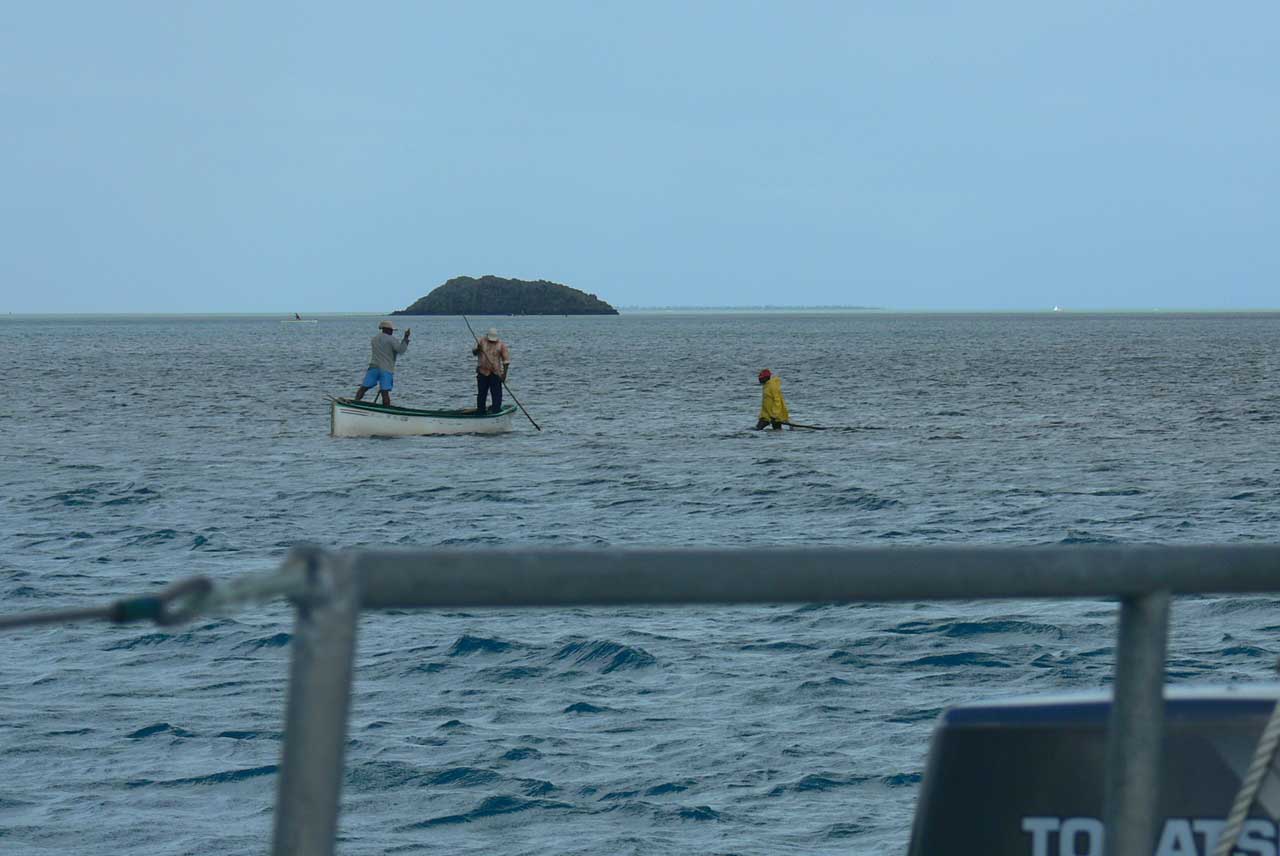
|
| fisherman walks to work |
We walked more than 150 kms
during our month in Rodrigues, which is pretty good going considering the island is only 18kx7k. Our alongside berth in Port
Mathurin was free with complete security including a policeman on the gate and we were the only yacht there. Every 10 days
or so we had to move out and anchor to allow the supply ship from Mauritius in alongside. Rodrigues is completely surrounded
by coral reef and Port Mathurin has only existed as a proper deep-water port since 1990 when they blasted a channel through
the reef. Apparently 12,000 people turned out to watch the first supply ship come in. It stays only one night now unloading
as compared to up to two weeks in the past when everything was brought ashore by lighter. A turning or anchoring basin was
also created and this was where we lay. Contrary to our fears the holding was superb – the best we’ve ever encountered
– good job, as the drying reef was only a boat length behind.
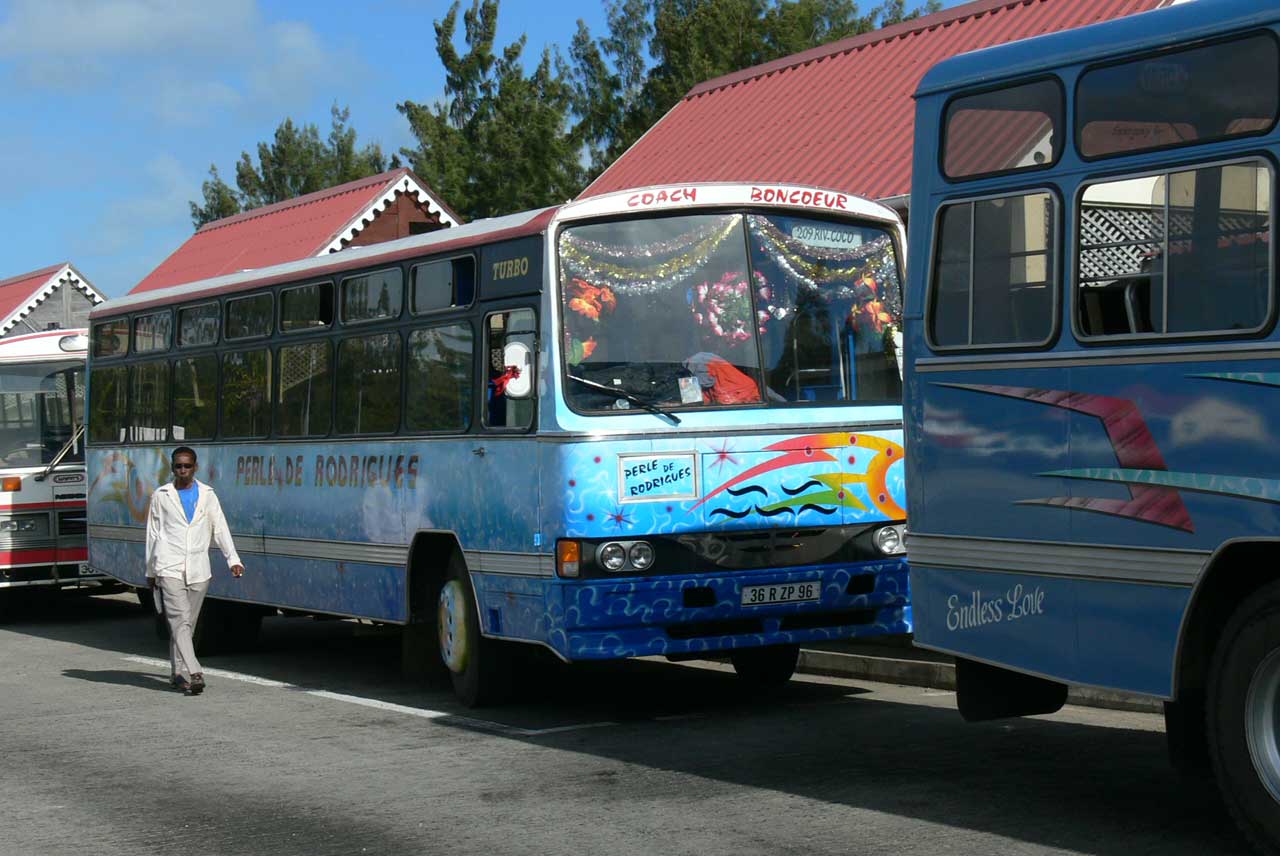
|
| brightly decorated local bus |
35,000 people live on Rodrigues;
mostly subsistence farmers and fishers. Almost every scrap of land is used in some way. The people were unfailingly polite
and friendly and quaintly old fashioned. Every adult wears a hat, for example, from baseball caps and trilbies to hand woven
straw with large flowers and all held on with ribbon or elastic to combat the wind. There are few private cars on the island
and most people go by bus. A very colourful fleet covers just about every tarmaced road. They are old, rattly and would fail
any clean air test but are very cheap and frequent. It wasn’t unusual for the bus to stop and the conductor jump out
to examine if the rattle was from an important part. He might silence it with a strategically placed wad of oily rag or if
it happened to be a dangly piece he would wrench it off and bring it back inside and so we would continue. Our best value
journey was 1.5 hours of scenery and people watching for 33p.
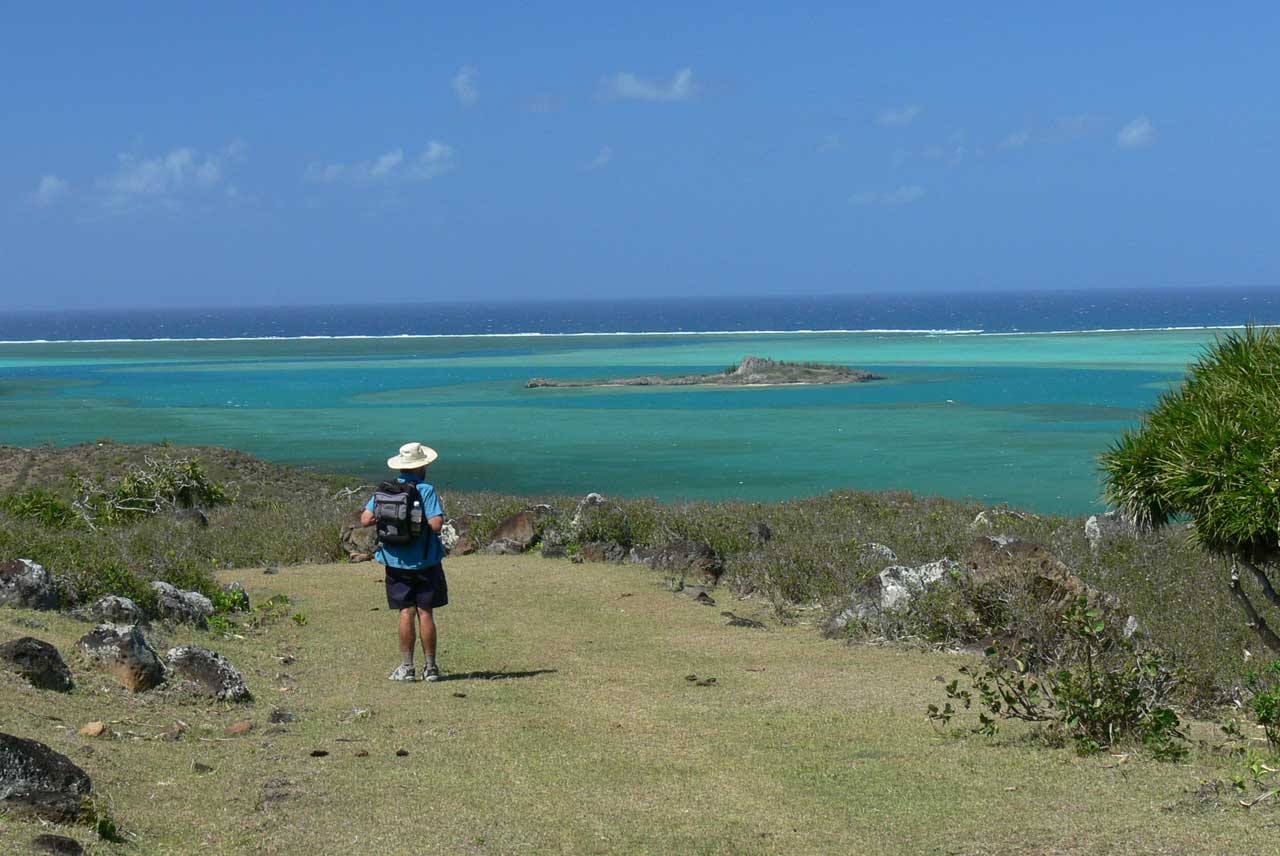
|
| walk this way |
The island is bisected by
a spine of mountains. We would take a bus to the main village at the top and walk down, have our picnic lunch and get a bus
back from a different part of the island – very civilised walking indeed. We were able to follow old grassy footways
which zigzagged down the hillsides and between the various hamlets eventually meeting up with the main tarred road. We shared
these paths with goat and cow herders, octopus fishermen and farm labourers. The views were spectacular. It was particularly
impressive to look down on the natural deep-water pass through the reef to Port Sudest. A deep-blue winding channel cut through
the silvery blue of the reef sweeping round an almost picture perfect island, looking like the massive single eye of a giant
in a folk tale. The lagoon was dotted with white triangles – fishing under sail is alive and well here. We watched the
busy foreshore with fascination as dozens of men landed their catch, fixed nets and traps or sold their wares under the shade
of casuarina pines. Dried octopus is a specialty and is fished for by wading on the reef with a long wooden pole tipped with
a metal trident. The octopus are dried by being spread over a coat-hanger shaped piece of wood and hung on a frame –
and very pungent they are too. You should see the state of the feet of these guys after being immersed in the water for hours
– like big wrinkly prunes with crevasse like cuts and calluses that probably never get a chance to heal.
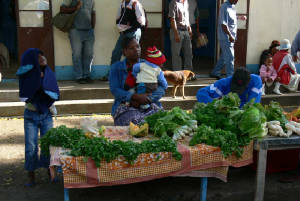
|
| mum i've got my head stuck |
Every Saturday there was
a market in Port Mathurin when the small farmers bring their produce to town. Some women only had a few handfuls of garden
greens to sell but they did so with all the dignity of international commerce. We watched an official check every scales to
see they were accurate and untampered with – each one had a lead seal on its mechanism. The locally woven palm frond
baskets were also on sale and not just for tourists. They are made by women’s cooperatives who also make crocheted handcraft
including old fashioned table centre pieces that I remember from Irish farm house parlours 35 years ago – a crocheted
circle of swans with long necks stiffened and pointing ceilingwards. Meat is only available on market day with the beasts
slaughtered on site the day before. We could hear them squeal from the harbour. A butcher’s training must only take
half an hour as the animals were chopped up and displayed on a slab with all the elegance of a chain saw massacre and not
a chill cabinet in sight. General shopping expenses were quite low with subsidised bread at 8p a baguette and a shortage of
luxuries to choose from. There was no local cheese or milk and even worse no crisps!! But since we’ve become non-drinkers
– since leaving Australia - we have acquired a very sweet tooth and made frequent visits to the patisserie for ‘wee
buns’ at 12p a go. They were pretty good but used a heavy hand with the yellow food colouring to make them look rich
and buttery.
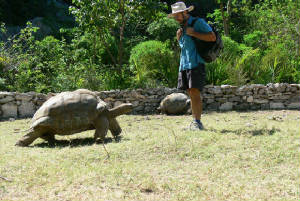
|
| get orf my land |
Our most interesting day
out was to a giant tortoise reserve. Apparently the island had a large population about 250 years ago but they were rapidly
made extinct by visiting ships that collected them for fresh meat. Same fate as the dodo on neighbouring Mauritius. Rodrigues
also had a now extinct flightless bird called the solitaire which was also taken in large numbers. The tortoise in the park
are from the Seychelles. They were almost 1 metre high and could raise themselves another foot off the ground when moving
fast. Their speed was a big surprise to me. The only tortoise I’ve any knowledge of was Freda on Blue Peter who took
about 6 months to get to the lettuce leaf at the other end of her box. These big fellas could charge along at a good clip
and generally straight towards you, which was a bit disconcerting when there was always a doubt as to their peaceful intentions.
Apparently they are vegetarians but you never know! When they stretched their necks out I was forcibly reminded of the creature
in Alien!!

|
| james waterstone and his big book |
We could have stayed
longer in Rodrigues but decided to move on the 400 miles to Mauritius which is quite a contrast even though the same country.
Mauritius is the third most densely populated place in the world and now we are tied up in the centre of the main city in
a fairly new waterfront development. Yet again we are travelling lots on the buses and getting a flavour of Asia, as the majority
of the population is Hindu complete with saris, temples and roadside biryani stalls. One of our final visitors in Rodrigues
was James Waterstone who has been collecting photos and autographs from visiting yachts for the last 20 years. His scrap books
made very interesting reading and we found we had met many of the entrants over the years. He was delighted to meet us as
he is of Irish descent. We have since come across many other Irish/Mauritian names. I will give an update on out time in Mauritius
when we leave and continue on to Reunion.
VIEW MORE RODRIGUES PHOTOS
|

